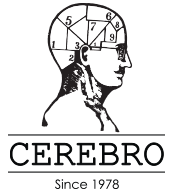Product Details
Julian Eltinge (May 14, 1881 - March 7, 1941) U.S.A. Julian Eltinge Vaudeville female impersonator and and silent film actor Born William J. Dalton in Newton, Massachusetts, Julian Eltinge is considered one of the greatest drag performers in the history of the American theatre. Though his professional life is widely known, his personal life is shrouded in the mist of time. It is believed that his father was a mining engineer and that early in his life he traveled out west with his father, ending up in Butte, Montana. Julian Eltinge first performed in drag for the miners who patronized the saloons of Butte. His father's disapproval was immediate and harsh, and young Billy Dalton, as he was known, was sent to Boston to live with his aunt, and it was in this city that his career bloomed. His start in show business, like his early life, is also shrouded in myth. One story details him playing his first female role at the age of ten with the Boston Cadets Review. In this story, he played so well that the next year the revue was written around him. In another version he was talking cakewalk lessons from a Mrs. Wyman's dance studio when he impressed upon his teacher an incredible ability to emulate females. It was Mrs. Wyman who encouraged young William to study the art of female impersonation. It is known, however, that his first appearances were in Boston, Massachusetts with the Tremont Theatre with the Cadet Theatricals. It was there that he was spotted by producer E. E. Rice and from there he was off to a life of fame and fortune. Julian EltingeEltinge's first drag appearance on Broadway was in the British musical comedy Mr. Wix of Wickham which opened September 19, 1904 at the Bijou Theatre in New York City. Following the success of the show, Eltinge entered vaudeville, which was followed by a tour of Europe. He toured simply as "Eltinge", leaving his gender a question mark. At the end of his performances, he would remove his wig, revealing his true nature. His lavish gowns and deft mimicry of feminine behavior made him a longtime favorite. While in London, Eltinge was commanded to give a performance for King Edward VII, who later presented him with a pet bulldog. Unlike most female impersonators of that era or since, Eltinge was successful in a broad range of entertainment: vaudeville, revue, musical comedy, farce and films. He made seven feature films, only one of which was in sound and provided him with the musical comedy format that was most successful for him. Julian EltingeEltinge's star began to shine on Broadway and on national tours and his name became known worldwide. Indeed, women were so enthralled by his performances that he established the Eltinge Magazine which advised women on beauty, fashion, and home tips. In 1910, Eltinge opened one of his most famous shows, The Fascinating Widow where he played Hal Blake who disguises himself as "Mrs. Monte" in a Charley's Aunt-like plot. The show only ran 56 performances in New York, but toured for several years. His fame was such that it even led to several silent film appearances. He remains the only drag performer to have, in 1911, a Broadway theatre named after him. The Eltinge Theater was shut down in the 1930s during a "public morality" campaign. It eventually became The Empire, and its old facade and lobby are currently part of the AMC Multiplex on 42nd Street. As many actors began to leave for movies, Eltinge followed and in 1917 he starred in silent pictures appearing with Rudolph Valentino in The Isle of Love (1922). By 1920, Eltinge was very wealthy and was living in one of the most lavish mansions in Southern California, "Villa Capistrano". But, by this time, the female impersonations that had built his career had begun to lose popularity. His fame faded with vaudeville, and he found few engagements in his later years. After 1930 Eltinge's career dissolved into a few nightclub dates that paid him a bare fraction of what he had once earned on Broadway. Laws had been enacted that forbid impersonations of women by men, and Eltinge was deprived of the means to earn his living. He died in Manhattan, of a cerebral hemorrhage. separator Julian EltingeEltinge's private life was simply private. Aside from the gracefulness he exhibited onstage, Eltinge used a super-masculine facade in public to combat the rumours of his homosexuality. This facade included the occasional bar-fight, smoking cigars, and drawn out engagements to women (though he never married). He stretched the point of being manly offstage, suggesting his cross-dressing was just an act. He enjoyed drinking, and was once arrested during Prohibition after he was caught smuggling liquor into the US from Canada. Boxing, fisticuffs and brawling with thugs were among stories related to Eltinge "proving" his manhood. However, there were rumors he had male lovers, including silent film star Rudolph Valentino and sports figure E. Ralph Greenleaf . Eltinge and Valentino made one film together, An Adventuress, in 1916, which was later re-issued in 1922 as The Isle of Love. There was also a rumor that Eltinge was "the Lady in Black" who made annual pilgrimages to Valentino's grave. Eltinge himself never married, but spent his entire as a bachelor and lived with his mother. When asked about his sexuality, Eltinge quipped, "I'm not gay; I just like pearls." THIS CIGAR LABEL BIOGRAPHY TAKEN FROM http://andrejkoymasky.com
 View Cart {{shoppingcart.totalQuantityDisplay}} Item(s)
View Cart {{shoppingcart.totalQuantityDisplay}} Item(s)
 View Cart {{shoppingcart.totalQuantityDisplay}} Item(s)
View Cart {{shoppingcart.totalQuantityDisplay}} Item(s)
